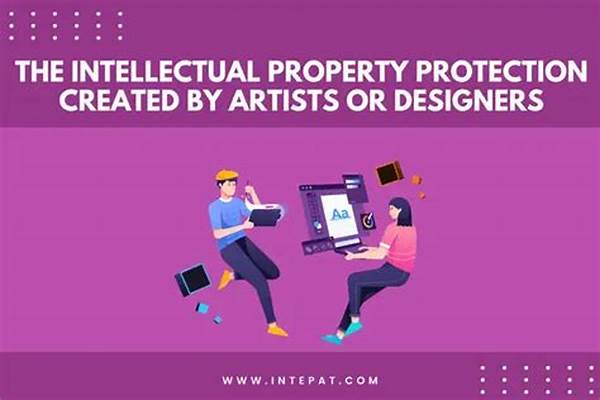Artists possess a unique ability to express complex ideas, emotions, and narratives through their creative works. As they pour their heart and soul into their creations, it becomes crucial to protect these assets from unauthorized use, reproduction, or adaptation. This is where “intellectual property for artists” comes into play. It serves as a shield, safeguarding the artist’s rights and ensuring they receive due recognition and compensation for their efforts. In this article, we delve into the significance of intellectual property for artists and how it empowers them in the creative industry.
Read Now : Designing Logo Usage Rules
Understanding Intellectual Property for Artists
Intellectual property for artists encompasses legal protections such as copyrights, trademarks, and patents that prevent unauthorized use of their work. Copyrights, for instance, automatically protect original works of authorship, giving artists the exclusive right to reproduce, distribute, and display their creations. Trademarks protect symbols or names associated with an artist’s brand, while patents can occasionally apply to unique processes or materials used in creating art. By understanding these protections, artists can safeguard their work and maintain control over how it’s used and monetized. Intellectual property for artists is fundamental in ensuring that creativity is rewarded and preserved.
Key Elements of Intellectual Property for Artists
1. Copyright Protection: Offers automatic protection to original works once they’re created, providing artists with exclusive rights over their distribution and reproduction.
2. Trademarks: Protects symbols, names, and logos associated with an artist, preserving their brand identity in the market.
3. Patents: Although less common in art, patents can safeguard unique processes or innovations employed in artistic creation.
4. Licensing Agreements: Allow artists to grant permission for others to use their work while still retaining control over its use and terms.
5. Moral Rights: Enable artists to maintain the integrity of their work and object to any derogatory treatment that might affect their reputation.
Challenges in Intellectual Property for Artists
Intellectual property for artists is not without its challenges. Many artists face difficulties in understanding and navigating the complex legal frameworks involved. Moreover, the digital age has compounded these challenges, with works being easily copied and distributed online without permission. Artists need to be vigilant and proactive, sometimes seeking legal assistance to ensure their intellectual property rights are enforced. Despite these hurdles, IP rights remain essential for maintaining a fair playing field, allowing artists to flourish creatively and commercially.
Read Now : Digital Art Conversion To Nft
Managing Intellectual Property for Artists
Artists can employ several strategies to manage their intellectual property effectively. Firstly, it’s crucial for them to document their work from conception to completion. This documentation serves as evidence of ownership and originality. Secondly, artists should consider registering their works legally where possible to strengthen their claims. Furthermore, educating themselves about the rights available in different jurisdictions can prevent potential legal issues. Lastly, collaboration with legal professionals or organizations specializing in arts governance can provide invaluable support in navigating the intricate landscape of intellectual property for artists.
Importance of Intellectual Property for Artists
Safeguarding Creativity
For artists, intellectual property is akin to a fortress protecting their creative legacy. The importance of intellectual property for artists cannot be overstated, as it ensures that creatives are rightfully acknowledged and compensated. By giving artists control over where, how, and by whom their work is used, IP rights empower them to focus on their craft rather than constant vigilance over unauthorized exploitation. Without these protections, artists might experience infringement on their rights, weakening their potential to earn and innovate. Thus, understanding and utilizing IP laws can significantly impact an artist’s career trajectory and financial well-being.
Strengthening Economic Value
Aside from protecting creative rights, intellectual property for artists plays a significant role in adding economic value to their work. By securing IP rights, artists can monetize their creations through avenues such as licensing, merchandising, and collaborations. These opportunities not only boost an artist’s earnings but also enhance their reputation in the competitive art market. The ownership of intellectual property transforms art from merely a passion into a viable profession that rewards innovation and skill. Through IP laws, artists are encouraged to explore new mediums and ideas, knowing that their efforts are protected and valued.
Conclusion on Intellectual Property for Artists
Empowering Artists
In summary, intellectual property for artists is essential in ensuring that their creations are appropriately protected and respected. IP rights provide a framework that empowers artists to have control over their work, allowing them to benefit financially and creatively in the long run. Through understanding and leveraging these protections, artists not only safeguard their rights but also enhance their professional development and economic opportunities. As the creative landscape evolves, the role of intellectual property in supporting artists will remain pivotal, representing a key component in preserving the integrity and sustainability of artistic expression.



